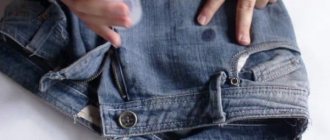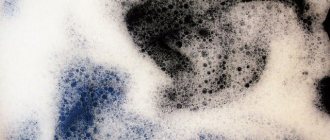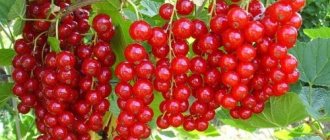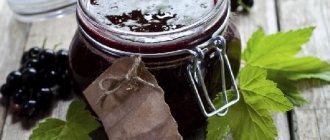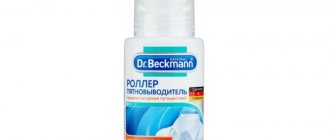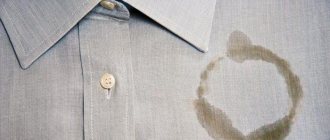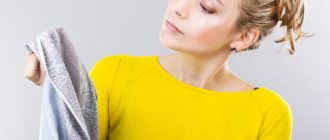With the onset of summer, the garden plays with different colors thanks to the rich harvest of berries: raspberries, honeysuckle, strawberries and currants. Each type is rich in vitamins, especially currants. This is the berry that children and adults like. Often, picking or eating currants can leave unpleasant consequences in the form of stains not only on clothes, but also on the sofa or carpet. Your detergent or laundry detergent cannot always cope with such dyes, so it will be useful for every housewife to learn how to remove currant stains.
Features of removing currant stains
Due to the high content of purple pigment, traces of currants are very difficult to remove. If you can put up with small marks on multi-colored clothes, then in order to remove stains from white things, you will have to make an effort. The future result largely depends on what gets on the clothes: fresh currants or drops of jam.
First of all, it is necessary to remove the contamination particles as quickly as possible. To do this, just use a blunt object: a spoon, the back of a knife blade. If you get blackcurrant juice on your T-shirt or pants, you can use a clean, dry cloth and gently apply it to the stained area.
After this, you will have to use more aggressive means to finally remove the currants from your favorite T-shirt or dress.
We recommend reading: How to remove brilliant green from linoleum
Useful tips and tricks
To ensure that the process of removing stains from fabric does not cause difficulties, you must adhere to the following recommendations:
- stains must be removed immediately after they form; old stains are much more difficult to respond to stain removers;
- It is necessary to apply the composition to remove dirt from the inside, this way you can reduce the risk of streaks and color fading;
- before starting to apply the stain cleaning composition, you should first prepare your clothes by clearing them of dust and additional accessories that may be damaged during contact with the rust remover;
- rust must first be removed using stain removers, and only then washed with water;
- observe protection methods for exposed areas of the body and mucous membranes;
- promptly remove metal objects before contact with water;
- before starting the procedure, you must study the information on the label;
- After using the stain remover, items are washed separately;
- You can remove rust from shirts and other thin materials using lemon juice if the fabric has recently deteriorated.
Following simple recommendations will extend the life of your clothing and restore the freshness and brightness of the fabric. Contaminants that occupy a large area on clothing are washed in several procedures, depending on the age of the contamination.
Improper drying of clothes very often provokes the appearance of stains, such as rust stains. Special preparations that can be purchased at any household chemical store can be used as stain removers. However, methods using improvised means are often used to eliminate contamination without harm to fabric fibers. Such methods are highly effective and do not require financial resources.
Share link:
How to remove black currants from clothes. Traditional methods
Folk remedies are the experience of many generations. Housewives who found ways to remove currant stains shared with friends and acquaintances, accumulating and passing on the necessary knowledge. Years of experience have proven the effectiveness of several methods.
Running water
Almost any fresh mark, including from currants, can be removed with water. This is easy to do: just wash until the juice is absorbed deep into the threads of the fabric. And following some rules guarantees a good result:
- To do this, you need to turn the clothes inside out.
- Direct a stream of cold water at the dirt.
- If it is fresh, the result will be noticeable in a few minutes.
Important! Do not use hot water: high temperature may have the opposite effect.
Table salt
To remove contamination in this way, you need to mix 3 tbsp. l. table salt with 1 tbsp. l. water to form a thick paste. Using a blunt knife or spoon, apply the mixture in a thick layer onto the dyed area of the fabric. The mixture should completely cover the traces of currants. The fresher the contamination and the thicker the layer of salt, the faster and better the reaction.
The average waiting time is at least 15 minutes. As the moisture evaporates from the resulting mixture, the salt will begin to absorb currant juice.
Removal of paste residues and contamination should be carried out in two stages:
- Using warm water, rinse off the applied mixture, directing the stream from the inside out.
- Turn the garment right side out and turn on the hot water, taking into account the maximum permissible temperature for the type of fabric used. Direct the jet from the front side.
Ice
A very effective way to quickly remove fresh dirt from clothes. To do this you will need a small piece from the freezer. The procedure is simple: apply ice to the stain and rub until it completely melts.
Soda and vinegar
You can get good results at home using baking soda and vinegar. To do this, you must first moisten the stain with cold water, sprinkle with baking soda and add a few drops of table vinegar. After 2 minutes, rinse the fabric under running water. If necessary, the procedure can be repeated.
We recommend reading: Baking soda: beneficial properties, uses, how to take
Hydrogen peroxide
To remove stains from clothes, you need to mix hydrogen peroxide with plain water in a ratio of 1:10. A few drops are not enough. Soak the soiled clothes in the resulting solution. Therefore, it is better to increase the volume to 1 - 2 liters.
Before use, you need to do a test by applying a small amount of product to an inconspicuous area. If the fabric has retained its structure, you can start soaking.
Important! This method is ideal for white items.
Boiling water
Fresh stains can be easily removed with boiling water. To do this, you need to boil the kettle. After stretching the clothes over a basin or pan, pour boiling water over the contaminated area.
The method is not suitable for dyed fabrics, since under the influence of high temperatures, paint pigments may lose their brightness.
Glycerol
This product is ideal for removing stains and dirt from delicate and dyed fabrics.
- You need to take one raw egg, remove the yolk and mix it with glycerin. Beat the mixture until foam forms.
- The resulting mass is carefully applied to the stain and rubbed into the fabric using an old toothbrush. The effect will become noticeable after 2 hours
- After this, the clothes can be washed as usual.
Table vinegar
This product can be found in the kitchen of any home. To remove stains, mix vinegar and citric acid. The solution should be applied to the stain. For convenience and to simplify the process, you can use a regular cotton pad.
Attention! When wiping a stain, you need to be careful. Sudden movements can damage fabric fibers.
Milk
Using sour milk or kefir is an effective method that has been proven over many generations.
- To remove the stain, pour sour milk into a basin or pan. If there is no milk, you can use regular kefir.
- Soak the clothes, lightly wash the contaminated area and leave for 3 - 4 hours.
- After this, place the clothes in the washing machine. Start the normal mode recommended for the type of fabric used.
Alcohol
Fresh currant stains can also be removed using diluted ethyl alcohol. To do this you need:
- Mix alcohol with water in a 1:1 ratio.
- Wipe the contaminated areas with the resulting solution.
- Upon completion of the procedure, rinse thoroughly under running warm water. This will help eliminate the smell of alcohol and any remaining dirt.
Important! If blackcurrant juice gets on colored fabric, you should first conduct a test on an inconspicuous area on the reverse side.
Let's use stain remover
Manufacturers of household chemicals offer a considerable number of different stain removers. Some do their job well, others poorly, but the first question we would like to raise is: how do these stain removers relate to garments? It is no secret that some chemicals are quite aggressive to tissues, and either cannot be used at all, or can be used, but in very small doses. Let's find out how to choose the right stain remover for contaminated items.
- Use only highly specialized stain removers. You should not believe advertisers' claims that there are high-quality stain removers suitable for all types of fabric. They are either not effective enough or are generally dangerous to use on delicate fabrics.
- How to remove stubborn stains from clothes using a specific type of stain remover? First of all, you need to carefully read the instructions for using a particular type of chemistry. If you apply a stain remover to a certain type of fabric in the wrong proportion, you can deprive it of not only an old stain from dirt, but also its natural color.
- Read the composition of the stain remover carefully. Of course, without being a chemist, it is quite difficult to understand these “tricky” names of chemical substances. However, we all have the Internet and search engines, they will help us find the answer to the question of what chemical substance has what properties and why it is dangerous. Under these conditions, you should not buy a stain remover until you understand its composition.
- Look online for reviews of specific stain removers. In general, people have already formed a certain opinion about the best stain removers and it should be taken into account.
Will a piece of laundry soap help?
How to remove a stubborn stain? It may sound strange, but in the fight against old stains it is better to start with ordinary laundry soap. Firstly, what is the point of immediately spending money on expensive stain removers if soap can help, and secondly, soap will not harm the fabric, but a stain remover very well can, so don’t rush to take risks.
How to remove stubborn stains using laundry soap? Wet the contaminated area of the fabric with cold water (especially if you need to remove stains from juice, blood, egg yolk, sweat, etc.), thoroughly soap it on both sides. Let the item of clothing “marinate” for several hours, then put it in the “washing machine.”
How to remove blackcurrant stains using household chemicals
The use of household chemicals is undoubtedly one of the most effective ways to eliminate this type of pollution. Following several rules will allow you to remove the mark and avoid damage to clothing:
- Action needs to be taken quickly. The fresher the stain, the easier it is to remove.
- Before washing, you should treat the area where traces of currants appear. For this, it is best to use Persil small & mighty bio.
- Before loading the washing machine, additional treatment of the stain with an Eraser Ball will achieve better results.
- Using normal mode. Washing should be done on a normal cycle, taking into account the recommended temperatures suitable for the type of fabric from which the dirt needs to be removed.
New products that have proven their effectiveness
Rinsing with water can remove much of the berry juice. Unfortunately, it is very difficult to achieve an ideal result on light fabric. If the consequences of eating currants appear on your favorite T-shirt, trousers or children's clothing, pre-treatment with modern stain removers will help remove them.
When applying the product, the components included in its composition soften the fabric, and it becomes easier to remove the mark.
Persil small & mighty showed the best effectiveness. It is usually sold complete with a handy tool known as an Eraser Ball. To remove contaminants, the manufacturer recommends following a certain sequence of actions, which is indicated on each label:
- Lightly moisten the contaminated area with cool water.
- Apply a small amount of product to the damaged area.
- Gently rub in the gel.
- Wash clothes in a washing machine on normal cycle.
Important! It is not recommended to use hot water or tumble dry items if even the slightest traces of currants remain.
Removing stains with liquid soap
To remove traces of currant juice, you can also use foam. To do this, mix a small amount of liquid soap with warm water. Beat the resulting solution until foam appears. It is best to use a sponge for application. After removing traces of currants, you need to remove any remaining product with a clean, dry cloth.
Stain remover Vanish
This is a popular and effective remedy that is loved by many housewives. You can remove currants from clothes by following the manufacturer’s recommendations:
- Apply a small amount of product to the stain.
- Using gentle movements, distribute the gel evenly over the entire surface.
- Leave overnight.
- Wash clothes in a washing machine on normal cycle.
We remove stains in one go!
Each housewife, trying how to remove currant stains, chooses her preferred option.
A stain remover that will solve the problem of removing black currants from clothes quickly and inexpensively. We offer you a list of stain removers that will make your homework easier to keep things clean and remove stains in one go:
- Frau Schmidt – stain removing soap. Designed for washing baby clothes and does not cause skin irritation or allergies. The disadvantage of spinning soap is that it only removes fresh stains, mainly from woolen items.
- Vanish Oxi action - this stain remover cannot be used on leather, wool and silk, as the manufacturer writes on the packaging. It is better not to soak the laundry in water, but to rub the powder directly into the stain, like a paste, moistening it with water. After forty minutes, the item needs to be rinsed. On colored fabrics, you need to keep the powder for several minutes so that the color does not disappear.
- Sarma Active is a powder stain remover that is inexpensive but very effective. Many housewives are delighted with it.
- SA8 Amway is a stain remover in the form of a spray. Removes difficult stains of various origins. Easy to use. Lasts for a long time. The disadvantage is the high price.
Of course, this is an incomplete list. You can choose a different stain remover that matches your laundry detergent. For small children there is a special series of washing powders and stain removers “Eared Nannies”. Products from this series are suitable not only for children's clothes, but also for the laundry of people who suffer from allergies or asthma.
When using household chemicals, you must follow all manufacturer's recommendations. Regarding water temperature, type of fabric, soaking time and amount of product used. Otherwise, you can end up with a product of unknown color and shape, which you can only throw away.
Even if you have a good stain remover, do not put off the problem of how to remove currant stains for too long. Remove it immediately, even if you don't plan to wash it. It won't take much time, but will improve the result of your work many times over.
Now you know everything about the fight against traces of berry juice on things, you can choose the option you like and enjoy the good result. Good luck in your business, let the problem of how to wash currants from clothes no longer darken your mood!
Vitamins and microelements, of which there are huge amounts in seasonal summer currants, are undoubtedly needed by our body. We make smoothies from it, add it to pies, eat it sprinkled with sugar or flavored with sour cream. But juicy berries have one huge drawback. Did you guess it? We are talking about difficult to remove stains. There are dozens of ways to remove currant stains from clothes. We will share the most effective and affordable ones.
We choose a method depending on the type of fabric
Let's consider methods using improvised means that can easily be found in every home, even in the country.
Linen and/or cotton products
You will need citric acid or vinegar. Dilute with water in equal proportions and boil. If you use vinegar, add it to the already prepared boiling water. Stretch the item with the stain over the tub or container. Carefully pour the resulting boiling solution onto the stain. The stain will become much lighter.
Woolen items
Pour the laundry soap into a container. Use a grater for convenience. Add a little warm water and stir until foam forms. Treat the stain with this soap solution. Next, wash by hand. Leave it for a while, and then wash it in the machine on the “wool” cycle.
For delicate items, you can use glycerin. It is sold at the pharmacy. Dilute it with water 50/50. Treat the stain thoroughly and leave for 2 hours. Wash as normal, adding gentle bleach.
In addition to the methods discussed above, there are also grandmother’s methods that have proven their effectiveness over the years.
Overview of cleaning options
Several products are suitable for removing stubborn stains from berry juice. Substances differ in the method of application, composition and characteristics of their effect on the fabric surface.
Glycerol
The effect of glycerin allows you to dissolve traces of berry juice without leaving a residue. To do this, you need to slightly heat the glycerin in a water bath and wipe the contaminated area with the product. After 20-30 minutes, the solution is washed off with warm water and the item is dried.
Hot water
Hot water can only wash off fresh stains that have not had time to absorb and dry. Immediately after berry juice gets on the fabric, you need to rinse the clothes under pressure of water and treat them with soapy water. It is also recommended to wash the dirty item in the machine.
Personal opinion
It is easier to prevent contamination from occurring than to decide later how to remove a currant stain. Unfortunately, we can only apply this truth to ourselves. Scolding your husband or children for dirtying their clothes is unethical.
If the available means recommended for combating difficult-to-remove stains cause bewilderment. And the advice of folk craftsmen on how to wash blackcurrants causes fear. It is better to use modern household chemicals. It differs in price, quality and method of application, how to remove currant stains from different types of fabric.
Cushioned furniture
Removing juice stains from a sofa is more difficult due to the texture of the upholstery. Velor and jacquard are cleaned only using the dry method. Dry cleaning will remove juice stains from microfiber and flock. As an alternative, you can use soda, laundry soap and salt diluted with water to a paste. But these products only deal with fresh stains.
Dear readers of the Tkan.Club website, if you still have questions on this topic, we will be happy to answer them. Leave your reviews, comments, share stories if you have dealt with vegetable oil stains! Your life experience may be useful to other readers.

